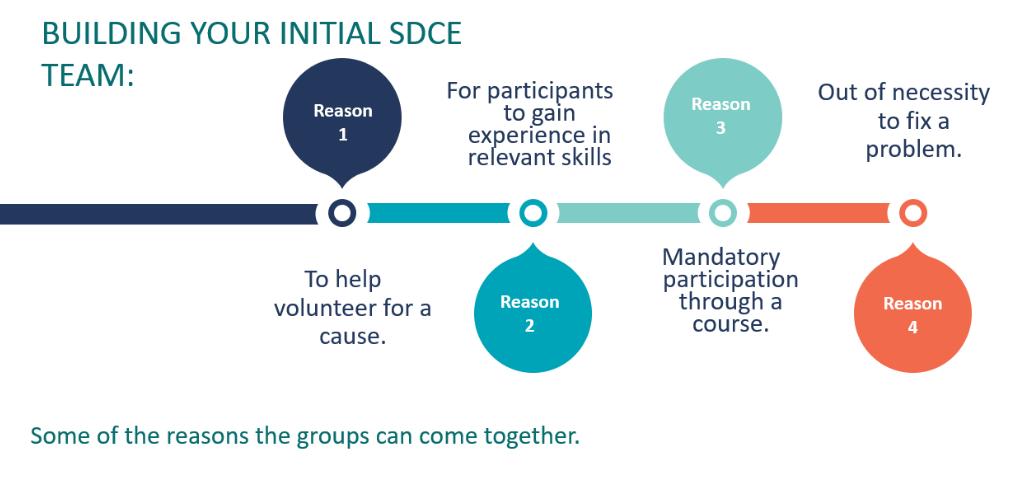- Home
- Study guide
- Module 1
- Topic 1: What is Student Digital Civic Engagement?
- Topic 2: How is Digital Civic Engagement Impacting Universities (and Beyond)?
- Topic 3: What Competences do Student Civic Engagers Develop?
- Topic 4: What does Student Digital Civic Engagement Look Like in Practice?
- Evaluation test for module 1
- Resources and further studies (Module 1)
- Module 2
- Topic 1: Problems that need solving – spotlight on global issues
- Topic 2: Improving your community through civic engagement
- Topic 3: Taking a service-learning approach to an DCE project
- Topic 4: DCE is building your competency levels. Here are the opportunities
- Evaluation test for module 2
- Resources and further studies (Module 2)
- Module 3
- Topic 1: What Do Great Digital Civic Engagement Projects Include?
- Topic 2: Getting Involved In Your First Digital Civic Engagement Project/ Initiative
- Topic 3: Using Technology To Enhance Your Civic Engagement Work
- Topic 4: Designing/ Delivering Digital Civic Engagement Solutions
- Evaluation test for module 3
- Resources and further studies (Module 3)
- Module 4
- Module 5
- Topic 1: Estimating Project Costs And Financial Needs
- Topic 2: Spotlight On Lean Start Up and Sustainable Business Model Canvas
- Topic 3: Crowdfunding Your Civic Engagement Projects /Causes
- Topic 4: Leveraging the power of corporate social responsibility
- Evaluation test for module 5
- Resources and further studies (Module 5)
- Module 6
- Topic 1: Why Building Credibility, Trust and Relationships are Key
- Topic 2: Cultivating and Growing a Student Civic Engagement Community
- Topic 3: Spotlight on Mission Marketing
- Topic 4: Technology Tools to Help You Share and Spread Your Civic Engagement Work
- Evaluation test for module 6
- Resources and further studies (Module 6)

Topic 1: Designing And Working Within A Digital Civic Engagement Team
T
he learning objective of this topic is to learn how to initiate a group to develop an idea, learn how to analyze what skills teammates have and how to use them to bring about a successful project.
Building your initial team
This topic examines how to design and work within a student’s  digital civic engagement team. A Guide to Digital Civic Engagement provides a wide variety of reasons and ways that Digital Civic Engagement (DCE) projects can develop.
digital civic engagement team. A Guide to Digital Civic Engagement provides a wide variety of reasons and ways that Digital Civic Engagement (DCE) projects can develop.
A Guide to Digital Civic Engagement can be found by clicking on this link.
The types of DCE teams that can occur:
- Student Led – a DCE team that has been founded and led primarily by students.
- Educator Led – a DCE team that has been founded and led primarily by educators.
- We are now adding a third team type: Service Led – a DCE team that has been founded and led with the purpose of service learning.

Understanding how the team will be formed (whether there is choice in team members, or if team members are automatically made) will enable the leaders of the team to produce a strong and effective team.
It is also important to note at this stage, who will the leaders of the project be? Will lecturers oversee the project, or will the students be in charge of the project themselves?
There are several steps you can make to ensure your DCE team will be effective:
- The first step of creating a team, is to establish the mission of the group. A mission is the purpose or reason of your project. Identifying a mission will also help to ensure that all team members are on the same page, and everyone understands their purpose.
- Next, the leaders of the group need to evaluate the skillset of each member of the group. Each member of the project will bring something different to the team, from attitudes to skills – think about how each member might fit into their roles. By aligning the correct tasks to the right group members, you will help to ensure the success of the project.
- The next step is to establish the roles of the members of the group as it will help to ensure the project will be a success. When you have all the members for your team, it is important to assign roles for each team member, so everyone is clear on what they must do for the project. This stage also offers great learning opportunities for students through peer-to-peer learning.



